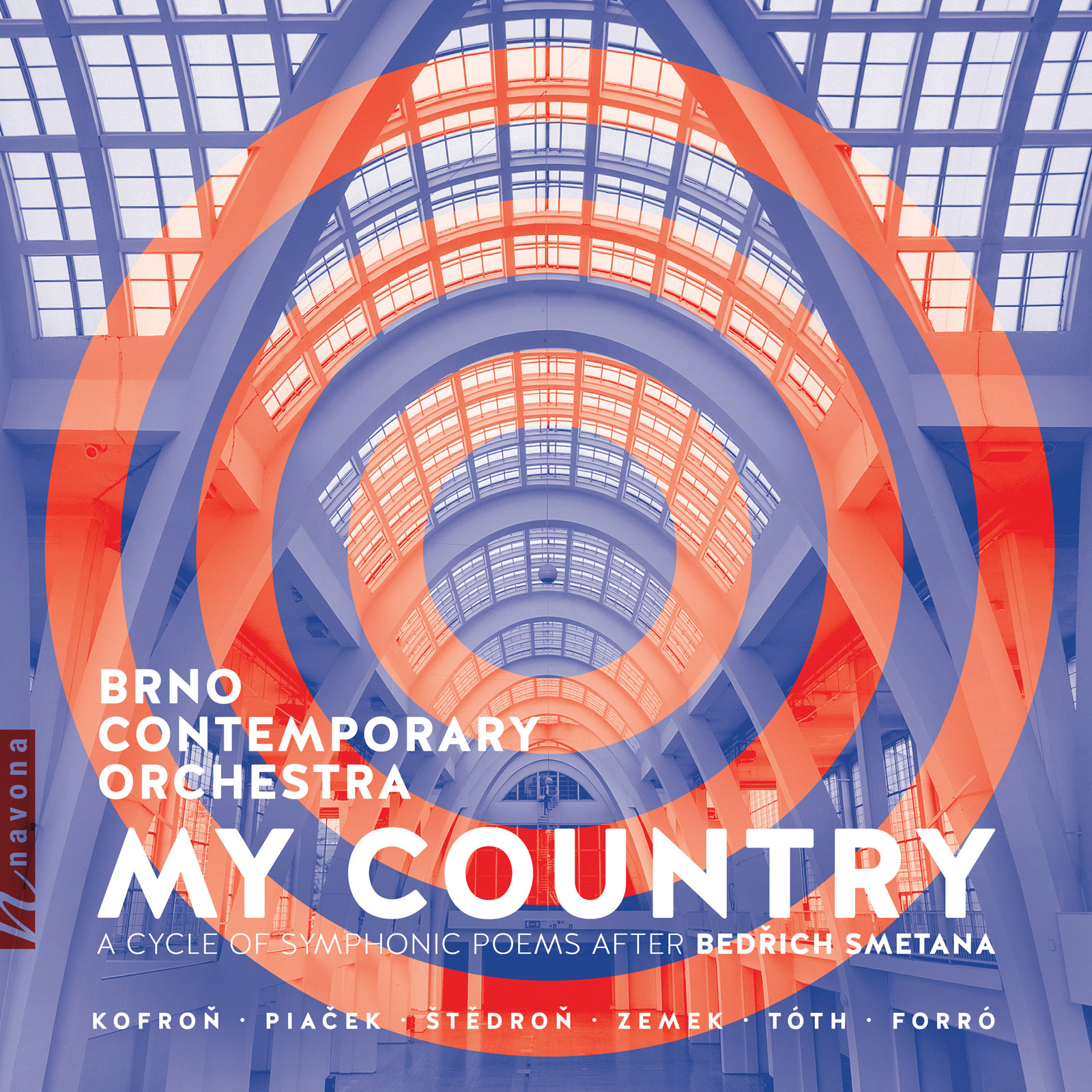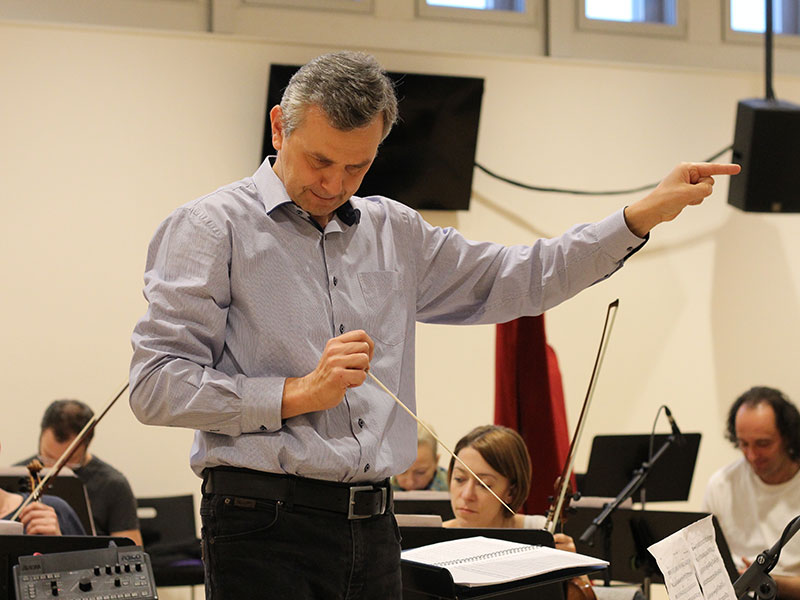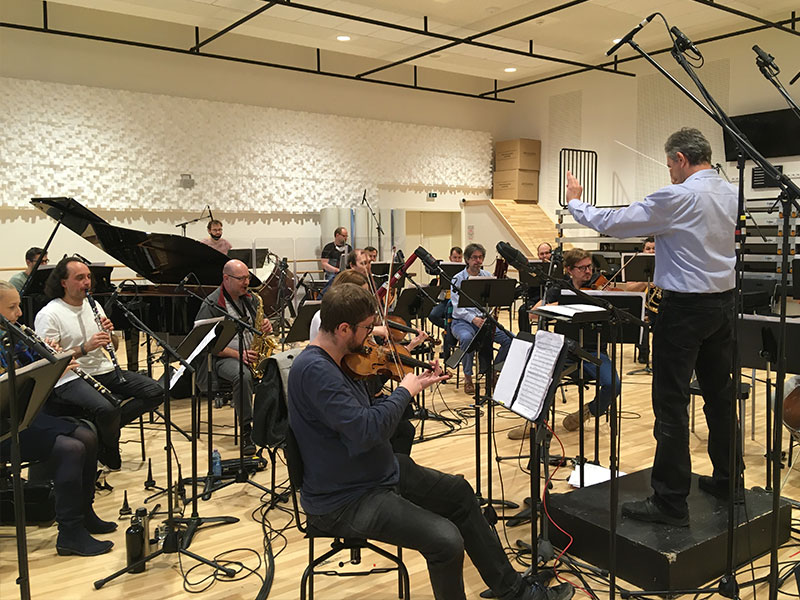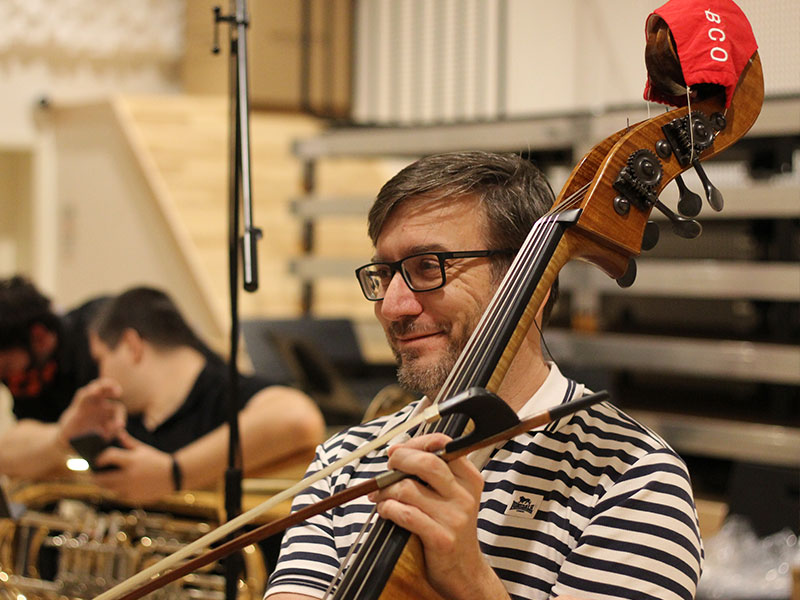My Country
Petr Kofroň composer
Marek Piaček composer
Miloš Štědroň composer
Pavel Zemek Novák composer
Miroslav Tóth composer
Daniel Forró composer
Brno Contemporary Orchestra | Pavel Šnajdr conductor
Bedřich Smetana’s Má vlast is a cornerstone of the Czech Republic’s musical culture, heard in everything from celebrations and funerals to advertisements and fireworks shows. On MY COUNTRY, six composers—Petr Kofroň, Marek Piaček, Miloš Štědroň, Pavel Zemek Novák, Miroslav Tóth, and Daniel Forró—pay homage to country and Smetana’s iconic symphonic poems. Rather than presenting an album of simple interpretation, each composer takes one poem and adds their own flair, reimagining each piece and drawing from their individual styles. The 19th-century masterwork is inflected with a multitude of genres and ideas, including smoky cabaret, red-hot tango, and alien attacks on Earth. The Brno Contemporary Orchestra, conducted by Pavel Šnajdr, navigates the different styles with ease, handily uniting each piece into a cohesive whole.
Listen
Stream/Buy
Choose your platform
Track Listing & Credits
| # | Title | Composer | Performer | |
|---|---|---|---|---|
| 01 | Hrad / Castle | Petr Kofroň | Brno Contemporary Orchestra | Pavel Šnajdr, conductor | 12:05 |
| 02 | Aqua Mater | Marek Piaček | Brno Contemporary Orchestra | Pavel Šnajdr, conductor | 12:46 |
| 03 | Šárka | Miloš Štědroň | Brno Contemporary Orchestra | Pavel Šnajdr, conductor | 9:27 |
| 04 | Kratší Dopis Bedřichu Smetanovi (s B a Es) / A Short Letter To Bedřich Smetana (With B-flat And E-flat) | Pavel Zemek Novák | Brno Contemporary Orchestra | Pavel Šnajdr, conductor | 9:16 |
| 05 | Stratený V Tábore / Lost In Tábor | Miroslav Tóth | Brno Contemporary Orchestra | Pavel Šnajdr, conductor | 11:20 |
| 06 | Blaník | Daniel Forró | Brno Contemporary Orchestra | Pavel Šnajdr, conductor | 14:41 |
Recorded November 25-27, 2020 at Janáček Theatre’s Recording Studio
in Brno, Czech Republic
Session Producer, Engineer, Editing, Mixing & Mastering Jan Košulič
Additional Editing & Mixing Lucas Paquette
Assistant Engineer Lukáš Nábělek
Cover image and main typography Martin Hrdina
Original cover photo Jan Prokopius
Executive Producer Bob Lord
Executive A&R Sam Renshaw
A&R Director Brandon MacNeil
A&R Mike Juozokas
General Manager of Audio & Sessions Jan Košulič
Recording Sessions Director Levi Brown
Audio Director Lucas Paquette
VP, Design & Marketing Brett Picknell
Art Director Ryan Harrison
Design Edward A. Fleming
Publicity Patrick Niland, Sara Warner
Artist Information
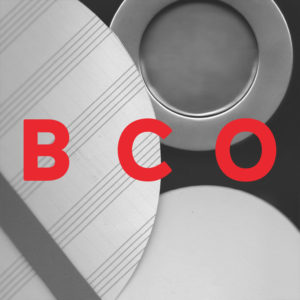
Brno Contemporary Orchestra
The Brno Contemporary Orchestra (BCO) was founded in 2011 with the aim of performing the world’s contemporary music and selected 20th-century works in Czechia and Czech music throughout the world. The ensemble includes top-level professional musicians employed in the leading Czech orchestras. It draws on a large pool of permanent collaborators who perform in various lineups according to the needs of each project.
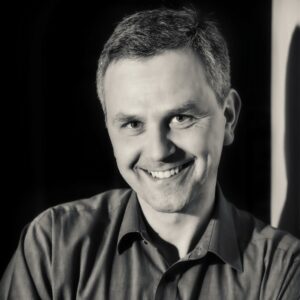
Pavel Šnajdr
Pavel Šnajdr is a Czech conductor and composer. He is a graduate of the Janáček Academy of Music and Performing Arts (JAMU), Brno in composition (which he studied with Alois Piňos) and conducting (with Emil Skoták). Beyond working with symphony orchestras, he has been engaged by music theatres including the J.K. Tyl Theatre in Pilsen, the Prague State Opera and the Moravian Theatre in Olomouc, and currently conducts opera at the National Theatre in Brno.
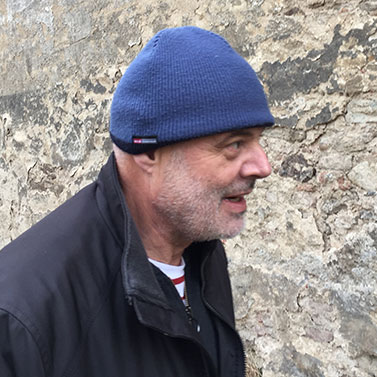
Petr Kofroň
Petr Kofroň (born 1952) is a Czech composer, conductor, and educator. He graduated from the Janáček Academy of Music and Performing Arts in Brno (1974–1979), taught at the Faculty of Education, Charles University, Prague (1980–1989), and was the artistic director at the Pilsen Opera (1996–2004, 2011–2014) and the Opera of the National Theatre in Prague (2013–2019).
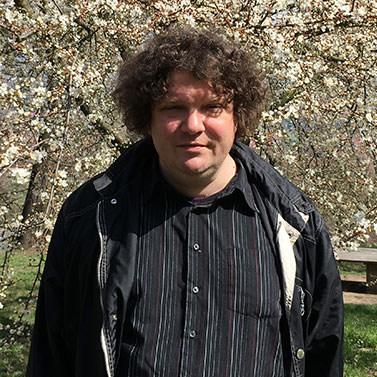
Marek Piaček
Marek Piaček (born 1972) is a Slovak composer and lecturer. A co-founder of the Požoň Sentimental ensemble, he has composed operas, symphonic and chamber works, and music for theatre and dance productions and films. He also applies himself to electronic, electro-acoustic and improvised music.

Miloš Štědroň
Miloš Štědroň (born 1942) is a Czech composer and musicologist. He graduated in musicology and Czech studies from the Faculty of Arts, Jan Evangelista Purkyně University (UJEP) in Brno and concurrently worked as an assistant at the Department of the History of Music, Moravian Museum.

Pavel Zemek Novák
Pavel Zemek Novák (born 1957) graduated in composition from the Janáček Academy of Music and Performing Arts in Brno and spent time as an exchange student with George Benjamin in London and Gérard Grisey in Paris. He played oboe in the orchestra of the Janáček Theatre in Brno. Since 1989, he has taught composition at the Brno Conservatory.
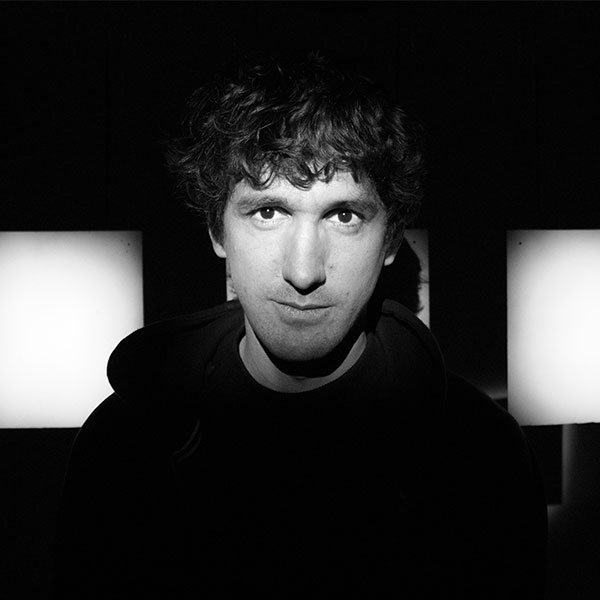
Miroslav Tóth
Miroslav Tóth (born 1981) is a Slovak composer, sound designer, and saxophone player. He earned his PhD at the Music and Dance Faculty of the Academy of Performing Arts in Prague, having studied with Michal Rataj. Previously he obtained a master’s degree in composition at the Academy of Performing Arts in Bratislava, where he studied with Vladimír Godár. Until Year Three, he studied with Jevgenij Iršai.
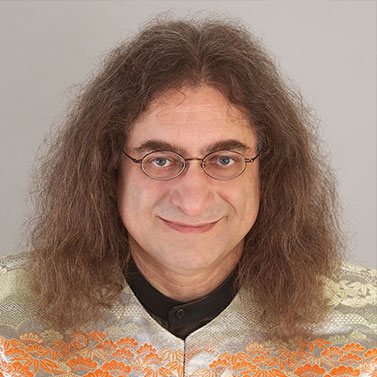
Daniel Forró
Daniel Forró (born 1958) is a composer in many genres and a multi-instrumentalist, improviser, educator, journalist, and polyglot. He graduated from the Brno Conservatory in organ and from the Janáček Academy of Music and Performing Arts (JAMU), Brno in composition, which he studied with Alois Piňos; in 1999 he earned a Ph.D. in the theory of composition from the same institution.
Notes
Like the Czech nation had to be created in the 19th century, its national music had to be created as well. This role fell to Bedřich Smetana (1824–1884), who was allegedly more Czech and less Slavonic than Dvořák or Janáček. Smetana rose to the challenge, and in 1882 completed his amazing work, Má vlast, a cycle of six symphonic poems — Vyšehrad, Vltava, Šárka, Z českých luhů a hájů, Tábor and Blaník — which sing the praises of the historic milestones and picturesque landscapes in which the Czech nation had suffered and flourished. Though it may seem surprising, Smetana’s Má vlast continues to characterize the Czech nation in our cosmopolitan age. His fascinating cycle of symphonic poems is still an undisputed icon of the nation. Over time, it became a monument to anything and everything: Hitler and Stalin, Gottwald and Havel – they all listened to it. It is heard at celebrations and funerals, after defeats and victories, in advertisements, at funfairs and firework displays, everywhere, without anyone actually listening to it. Smetana’s music has disappeared under an accretion of ideas, ideologies, politics, and economic machinations.
Led by Pavel Šnajdr, the Brno Contemporary Orchestra has offered music as it is since 2011, without embellishment or cliché. With full confidence, it offers only what is in the actual score. With that as its mission, the orchestra selected composers to create their own versions of the symphonic poems in Smetana’s cycle, to recompose them as they hear them today. The brief was simple. We don’t want to provoke, we don’t want to parody, we don’t want to glorify; we are only interested in what Smetana’s Má vlast means to you today. Six autonomous works were written, offering six views of Smetana’s musical legacy.
Petr Kofroň takes one of the secondary motifs from Vyšehrad, only a fragment of an idea, a little joke, repeating it vigorously, unfolding it throughout his composition. Against the background of Smetana’s Vltava, Marek Piaček presents a post-modern, eclectic digression reaching to the music’s possible sources, from Monteverdi to an upright piano in a smoky cabaret. Miloš Štědroň’s Šárka is much more lascivious and seductive than Smetana’s; he transforms the drama of the Maidens’ War into a red-hot tango erotico. Pavel Zemek Novák respectfully wanders off in search of the age-old path in Z českých luhů a hájů (From Bohemia’s Woods and Fields) in order to arrive, exploiting fragments of Smetana’s music, at his distinctive style in unison with sustained notes. Miroslav Tóth’s reworking of Smetana’s Tábor largely dispenses with the bellicose roar of God’s warriors, though it is still heard in the background, only to be almost revealed in the conclusion. Under the fabled Blaník Mountain, a horde of valiant Hussite warriors are sleeping, waiting to aid the Czech nation on its journey to a fabulous future; yet so far they haven’t shown up, and in his piece, Daniel Forró provides a hyperbolic and ironic comment on this fact. Only when — in the distant future — the aliens attack us, will the fighters finally be roused from their sleep, and as the mountain creaks open, they ride out to charge the invaders and fight for the Czech nation, albeit as somewhat sleepy marionettes.
“I do not plagiarise any famous composer, I only admire their greatness, and from them I accept for myself all that I acknowledge as good, beautiful and, especially, true, in art.”
–Bedřich Smetana in a letter to Adolf Čech, 4 December 1882
First presented in a gala premiere at Prague’s Žofín on November 5th, 1882 under the baton of Adolf Čech, Bedřich Smetana’s imposing series of six symphonic poems, Má vlast, is described at every opportunity as the most amazing work in our history. So truthfully does it rouse, praise, and encourage the Czech people, whether we find ourselves subjected or victorious. It hardly needs to be listened to in order to be described in these terms. It has been venerated by the Czech nation, the Czechoslovak, and the Czech state by Masaryk, Hitler, and Stalin. It was performed at Prague Castle to mark the founding of Czechoslovakia, in Berlin and Dresden for NSDAP members, in arms factories to celebrate the construction of socialism, and in Prague’s Old Town Square when communism was toppled. It is played to promote Pilsner beer and Olomouc cheese, and to enhance state visits, school concerts, and festive fireworks. In short, anyone and anything can parasitise the cult of Má vlast.
Lest it be forgotten, we have decided to return to the most important aspect, the music itself. We have attempted to cleanse it of all its cultural, social, national, ideological, political, and economic baggage, and to examine in detail how Smetana’s celebrated Má vlast might sound in the 21st century.
The cycle of recomposed symphonic poems was commissioned in 2018 for a gala concert for the 100th anniversary of the establishment of the independent Czechoslovakia. Initially, we approached three Czech and three Slovak composers, but circumstances dictated that it ended up like the Pittsburgh Agreement and left us with four Czechs and two Slovaks. It was supposed to be varied, with diverse personalities and different compositional approaches; it was supposed to be free – distinctive composers unencumbered by notions about the right way to tackle it; it was supposed to be timeless – various generations and various experiences; and most important, it was supposed to be candid. And this is how it emerged: Petr Kofroň (Vyšehrad), Marek Piaček (Vltava), Miloš Štědroň (Šárka), Pavel Zemek Novák (Z českých luhů a hájů), Miroslav Tóth (Tábor) and Daniel Forró (Blaník).
